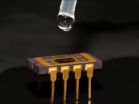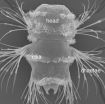(Press-News.org) The potential value of turning the nation's freeways into "smart transportation systems" is enormous. Equipping the nation's concrete arteries with a nervous system of computers and sensors that directly control on-ramp signals to keep traffic moving smoothly can substantially reduce travel times, fuel consumption and air pollution, not to mention improve road safety. In California alone the economic penalty of traffic congestion has been estimated at $400 million in extra costs and $3.5 million in lost wages every day.
The tightly integrated computing and networking systems required to achieve these benefits are currently under development. But they have a worrisome downside: They are vulnerable to cyber attacks by criminals, terrorists or hostile nations. There was a Hollywood dramatization of this risk in the 2003 movie "The Italian Job" when a hacker takes control of the Los Angeles traffic control system to aid his confederates in stealing a load of gold bullion from an armored car and then escaping.
Developing the means to identify such attacks should they occur and creating software that can guard against them is the goal of the Smart Roads Cyber-Physical Systems project that is being featured at the SmartAmerica Challenge Expo being held on June 11 in the Washington DC Convention Center.
The project is a collaboration between a team of cyber-physical security experts at Vanderbilt University's Institute of Software Integrated Systems (ISIS) and researchers at University of California, Berkeley College of Engineering and the Partners for Advanced Transportation Technology's Connected Corridors project.
The Connected Corridors team is investigating tools and technologies to coordinate components of major traffic corridors and operate them as a cohesive and integrated system. The first Connected Corridors pilot will be implemented on a multi-modal, heavily congested corridor in Southern California and will include freeway ramp meters and arterial signal systems working in concert with each other.
Under a previous award (FA8750-11-2-0078 from the Air Force Research Laboratory), the ISIS team used advanced computational methods to study how different types of cyber attacks, such as denial of service and spoofing, affect computer networks in general, and they are modifying the methods they developed so they work with the Berkeley traffic control system.
"The immediate object of our project is to identify the characteristics of such attacks so that system operators can recognize them when they happen and take the effective steps required to counteract them," said Gabor Karsai, leader of the ISIS team. "The longer term goal is to develop algorithms that can automatically detect these intrusions and nip them in the bud."
In order to dramatize the problem and potential solutions, the researchers have developed a video scenario titled "Smart Transportation Systems: Mitigating Carmageddon" that depicts how such an attack could take place, the effect it would have on the freeway, as well as the tools that the traffic system operators could use to identify the attack, mitigate its impact and return traffic flow to normal levels.
The scenario begins when a former transportation department employee comes up with a system that turns freeway-metering lights green for the vehicles equipped with his technology. He sells the system to a local shipping company as a way to cut down on delivery times. He is then approached by a hacker who pays him to add a second device to his system, one that interferes with the communication link between the metering lights and the traffic control center. When enough trucks with this equipment are on the freeway, it gives the hacker virtual control over the traffic system. One weekday morning the hacker uses this capability to bring traffic to a standstill, but the manager of the traffic control center checks on the performance of the metering lights with the traffic cameras, realizes they are misbehaving and launches a set of cyber-security tools that identify the locations where falsified data is being inserted into the system. This allows the controllers to manually control the metering lights, returning traffic to normal.
"Our Smart Roads demo aligns with the goals of the SmartAmerica Challenge," said Alex Bayen, leader of the UC Berkeley team. "Smart transportation systems can decrease congestion, which keeps the economy moving, and make roads safer. Our work focuses on characterizing the impact of attacks on traffic patterns and the potential remediation that would make the system more resilient."
INFORMATION:
The team is supported by the NSF Foundations Of Resilient CybEr-physical Systems (FORCES) project and receives funding from NSF grants CNS-1239166 (Berkeley) and CNS-1238959 (Vanderbilt).
UC Berkeley's Connected Corridors program is an outgrowth of two UC Berkeley research projects: Mobile Millennium, a pioneer in the gathering and processing of traffic information from GPS-enabled smartphones in real time in the U.S.; and Tools for Operational Planning (TOPL), which employs novel algorithms to model traffic.
ISIS is an academic research institute established by the Vanderbilt University School of Engineering. Research at ISIS focuses on systems with deeply integrated software that are networked, embedded, and cyber-physical. It has dozens of projects with academic and industry collaborators around the world.
Guarding against 'Carmageddon' cyberattacks
2014-06-11
ELSE PRESS RELEASES FROM THIS DATE:
Elucidating optimal biological tissue shape during growth
2014-06-11
A team of European scientists has now extended a previous biophysical model to investigate elongated growth within biological tissues by describing the evolution over time of the shape of a fruit fly's wing. They found the aspect ratio of the typical biological shapes may exhibit a maximum at finite time and then decrease. For sufficiently large tissues, the shape is expected to approach that of a disk or sphere. These findings have been reported by Carles Blanch-Mercader from the University of Barcelona, Spain, and colleagues, in a paper published in EPJ E. They provide ...
The inflatable concrete dome
2014-06-11
This news release is available in German.
Large shell structures made of concrete or stone are hardly ever built any more. The reason is that their construction requires large, expensive supporting structures. At the Vienna University of Technology, a completely new construction method has been developed, which does not require any timber structures at all: a flat concrete slab hardens on the ground, and then an air cushion below the plate is inflated, bending the concrete and quickly forming a sustainable shell. Even large event halls could be built this way. In ...
Mechanism explains complex brain wiring
2014-06-11
How neurons are created and integrate with each other is one of biology's greatest riddles. Researcher Dietmar Schmucker from VIB-KU Leuven unravels a part of the mystery in Science magazine. He describes a mechanism that explains novel aspects of how the wiring of highly branched neurons in the brain works. These new insights into how complex neural networks are formed are very important for understanding and treating neurological diseases.
Neurons, or nerve cells
It is estimated that a person has 100 billion neurons, or nerve cells. These neurons have thin, elongated, ...
HPV testing: IQWiG still sees indications of a benefit in primary screening
2014-06-11
The Institute for Quality and Efficiency in Health Care (IQWiG) assessed current study results on the benefit of a test for human papillomavirus (HPV) and examined whether its first assessment from January 2012 is still valid. The rapid report published by the Institute on 11 June 2014 answers this question with "yes". IQWiG still sees indications that precursors of cervical cancer can be detected and treated earlier and consequently tumours occur less often in women who underwent this testing.
HPV testing is not reimbursed by SHI funds
In screening for cervical cancer, ...
A somatic embryogenesis system to propagate pine hybrids able to tolerate water stress
2014-06-11
Neiker-Tecnalia, in collaboration with the UPV/EHU-University of the Basque Country, has in recent years been studying the high water stress tolerance of hybrids of the Radiata Pine (Pinus radiata X Pinus attenuata). These trees appear to be a very interesting alternative for the forestry sector in view of the modifications ecosystems are undergoing and will be undergoing as a result of climate change. To obtain new specimens of these trees in a rapid, productive way, the Basque Institute for Agricultural Research and Development, Neiker-Tecnalia, and SCION –the New Zealand ...
New paper amplifies hypothesis on human language's deep origins
2014-06-11
On the island of Java, in Indonesia, the silvery gibbon, an endangered primate, lives in the rainforests. In a behavior that's unusual for a primate, the silvery gibbon sings: It can vocalize long, complicated songs, using 14 different note types, that signal territory and send messages to potential mates and family.
Far from being a mere curiosity, the silvery gibbon may hold clues to the development of language in humans. In a newly published paper, two MIT professors assert that by re-examining contemporary human language, we can see indications of how human communication ...
A common hypertension treatment may reduce PTSD symptoms
2014-06-11
Philadelphia, PA, June 11, 2014 – There are currently only two FDA-approved medications for the treatment of posttraumatic stress disorder (PTSD) in the United States. Both of these medications are serotonin uptake inhibitors. Despite the availability of these medications, many people diagnosed with PTSD remain symptomatic, highlighting the need for new medications for PTSD treatment.
The renin-angiotensin system has long been of interest to psychiatry. Some of the first drugs targeting this system were the angiotensin converting enzyme (ACE) inhibitors and angiotensin ...
Chemical sensor on a chip
2014-06-11
This news release is available in German. They are invisible, but perfectly suited for analysing liquids and gases; infrared laser beams are absorbed differently by different molecules. This effect can for instance be used to measure the oxygen concentration in blood. At the Vienna University of Technology, this technique has now been miniaturized and implemented in the prototype for a new kind of sensor.
Specially designed quantum cascade lasers and light detectors are created by the same production process. The gap between laser and detector is only 50 micrometres. ...
Eye evolution: A snapshot in time
2014-06-11
This news release is available in German. Larvae of the marine bristle worm Platynereis dumerilii orient themselves using light. Early in their development, these larvae swim towards the light to use surface currents for their dispersal. Older larvae turn away from the light and swim to the sea floor where they develop into adult worms. Scientists of the Max Planck Institute for Developmental Biology in Tübingen have discovered that this change in the behavioural response to light is coupled to different neuronal systems underlying the eyes. The scientists have reconstructed ...
Foaling mares are totally relaxed -- no stress
2014-06-11
Foaling in horses is extremely fast. Labour and the active part of foaling, resulting in delivery of the foal, take 10 to 20 minutes and are considerably shorter than giving birth in humans or in cows. Is this brief period stressful for the animals or are horses more relaxed than humans when giving birth? This issue has been addressed by Christina Nagel and colleagues, who closely observed 17 foalings at the Brandenburg State Stud in Neustadt (Dosse), Germany, as well as recording electrocardiograms before, during and after foaling. The researchers also took samples of ...



